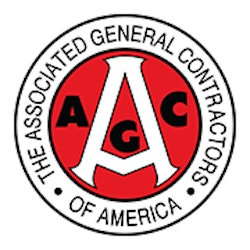
Prices for construction materials were flat in March, as plunging diesel fuel and metals prices offset increases in items used in new housing and nonresidential building renovations, according to an analysis of new federal figures released today by the Associated General Contractors of America. Association officials noted that contractors have kept the prices they charge to build structures level, leaving their margins vulnerable to price spikes for key inputs.
Construction Materials Prices Flat in March 2013
“Thanks to a recent, sharp drop in diesel fuel prices last month - along with continuing declines in steel, copper and aluminum prices -overall construction costs were unchanged from February and up only 0.9 percent over the past year,” said Ken Simonson, chief economist for the construction trade association. “However, building contractors had to absorb another month of increases in the cost of lumber and plywood, gypsum products, construction plastics, paint and roofing materials.”
The largest monthly price decrease among construction inputs occurred in the producer price index for diesel fuel, which tumbled 6 percent in March and 6.7 percent over 12 months. There were also monthly and year-over-year decreases in the indexes for copper and brass mill shapes, which fell 2.6 percent and 5.5 percent, respectively; steel mill products, down 0.4 percent and 9.5 percent; and aluminum mill shapes, down 0.1 percent and 2.7 percent.
In contrast, the producer price index for lumber and plywood jumped 3.7 percent since February and 17.7 percent since March 2012. The index for gypsum products such as wallboard and plaster climbed 0.7 percent and 17.9 percent, respectively. The cost of plastic construction products rose 0.5 percent and 1.5 percent, while the index for architectural coatings such as paint increased 0.4 percent and 0.6 percent, and the index for prepared asphalt and tar roofing and siding products rose 0.3 percent and 8.6 percent.
“Contractors have held the line on pricing, even as costs shoot up for some items they buy,” Simonson observed. “The net effect of these diverse changes is that some contractors may be squeezed out of business if they are caught by an unanticipated price spike.”
Simonson noted that the indexes for new nonresidential buildings -the government’s measure of what contractors say they would charge to construct specific building types -were little changed over the past month and year. The index for new school construction declined 0.4 percent in March and edged up only 0.5 percent over 12 months. A recently introduced index for health care construction dipped 0.1 percent in March, leaving it unchanged on net from its starting level last June. Indexes for new office, industrial and warehouse buildings were flat in March and increased between 1 percent and 2.3 percent over the past year.
Builder Confidence Drops for Third Consecutive Month in March 2013
Association officials noted that years of relatively weak demand for construction services have depleted many contractors’ reserves, leaving them particularly vulnerable to sudden fluctuations in materials prices. “It is going to take a lot more growth in construction demand before many contractors have the cushion needed to protect themselves from future price surges,” said Stephen E. Sandherr, the association’s chief executive officer.
View the March 2013 PPI table.




























